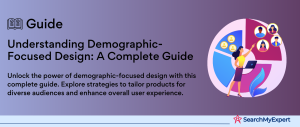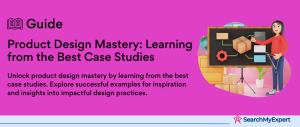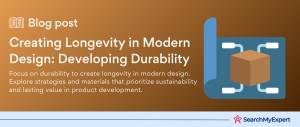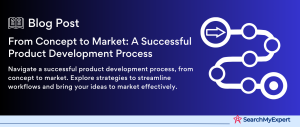Effective Packaging Design: Unwrapping Its Impact on Brands and Consumer Choice
In the bustling aisles of today’s markets, packaging design stands as a silent salesman, a visual storyteller, and a guardian of goods. It’s more than just a wrapper; it’s a critical business strategy. So, what exactly is packaging design, and why does it matter so much in today’s market?
The Essence of Packaging Design
At its core, packaging design is the art and science of encasing products for distribution, sale, and use. It’s a complex blend of aesthetic appeal, functional protection, and brand communication. But packaging design transcends mere appearance. It’s a strategic tool in a company’s arsenal, pivotal in making products leap off the shelf into consumers’ hands.
The Triple Role of Packaging
- Protection: First and foremost, packaging serves as a protective cocoon, shielding the product from damage during transportation and storage. It’s the product’s armor against the outside world.
- Promotion:
Packaging is a potent promotional tool. It grabs attention, communicates the product’s message, and makes a lasting impression. In a world where consumers make split-second decisions, the visual appeal of packaging can be a game-changer. - Differentiation:
In a sea of competitors, packaging helps a product stand out. It’s a key player in brand differentiation, offering a unique identity that separates one brand from another. This differentiation is crucial in influencing consumer choice and fostering brand loyalty.
The Impact on Brand Identity and Consumer Choice
Effective packaging design is pivotal in building a brand’s identity. It tells the brand’s story, conveys its values, and establishes a connection with the consumer. This connection is not just visual but emotional, influencing purchasing decisions and consumer preferences. A well-designed package can elevate a product from a mere commodity to a cherished brand.
Understanding Your Target Audience
Crafting the Customer Persona: A Key to Successful Packaging Design
Who is Your Ideal Customer?
Knowing your target audience is like having a roadmap in the intricate journey of packaging design. Your ideal customer isn’t just a demographic statistic; they’re a persona with distinct preferences, habits, and needs.
- Demographics:
Age, gender, income, education, and location. - Lifestyle:
Hobbies, values, daily activities, and social behaviors. - Shopping Preferences:
Online vs. in-store, price sensitivity, brand loyalty.
Analyzing Buying Habits
- Frequency of Purchase:
How often do they buy your type of product? - Decision Triggers:
What motivates them to choose one product over another? - Post-Purchase Behavior:
Do they return for more, or was it a one-time purchase?
Understanding Needs, Wants, and Pain Points
- Needs:
The basic requirements your packaging must meet. Is it convenience, durability, or eco-friendliness? - Wants:
These are the desirable features. Do they look for attractive designs, innovative functionalities, or brand alignment? - Pain Points:
What frustrates them about current packaging options? Is it hard to open, non-recyclable, or lacking in information?
The Influence of Demographics, Lifestyle, and Shopping Preferences
- Demographics:
A young, tech-savvy audience might prefer sleek, minimalist packaging, while older consumers might value simplicity and legibility. - Lifestyle:
An eco-conscious customer would be attracted to sustainable, biodegradable packaging. - Shopping Preferences:
Online shoppers might appreciate packaging that’s designed for safe shipping, while in-store shoppers might be drawn to eye-catching designs.
Defining Your Brand Identity
Establishing the Soul of Your Brand
The Core of Your Brand
Understanding your brand’s identity is akin to knowing your own reflection. It’s the essence of what your brand stands for.
- Core Values:
What principles does your brand adhere to? This could be sustainability, innovation, or luxury. - Mission:
What is your brand’s purpose? Beyond selling products, what impact do you aim to make? - Personality: Is your brand fun and quirky, or sophisticated and professional? This personality should be evident in your packaging.
Aligning Packaging with Brand Voice and Messaging
- Consistency is Key:
Ensure that your packaging design resonates with your brand’s voice. Is your tone serious or playful? Make sure your packaging speaks the same language. - Message Harmony:
The messaging on your packaging should align with your overall brand messaging. It should tell your brand’s story in a glance.
Visual Consistency Across Packaging
- Colors:
Choose a color palette that reflects your brand’s personality. Colors evoke emotions; make sure yours are sending the right message. - Fonts:
The typefaces you use should be in harmony with your brand’s character. They should be readable yet distinctive. - Design Elements: From logo placement to imagery, every element should be consistent across your packaging. This consistency builds brand recognition and trust.
Crafting a Compelling Message
Conveying the Essence of Your Product
Articulating the Unique Selling Proposition (USP)
The USP is the heartbeat of your product’s message. It’s what makes your product stand out in a crowded market.
- Clarity is Crucial:
Your USP should be clear and concise. It should answer the question, “Why should I buy this product?” - Be Specific:
General statements don’t entice customers. Be specific about what makes your product unique.
Engaging Through Visuals and Text
- Visual Storytelling:
A picture is worth a thousand words. Use visuals that not only attract but also tell a story about your product. - Captivating Copy:
The text on your packaging should be engaging and emotive. It should connect with the customer on a personal level.
Highlighting Benefits and Features
- Benefits Over Features:
Customers are more interested in how your product can solve their problems. Highlight the benefits rather than just listing features. - Visually Appealing Presentation: Use design elements like icons, infographics, or illustrations to make the benefits and features stand out and easy to understand.
Choosing the Right Materials and Format
Material Matters: Balancing Durability, Sustainability, and Suitability
Selecting the Appropriate Materials
Your choice of material is a statement of your brand’s values and a reflection of your product’s quality.
- Durability: Ensure that the material can protect your product adequately.
- Sustainability:
More consumers are looking for eco-friendly options. Consider materials that are recyclable or biodegradable. - Product Suitability: The material should complement the product it houses. For food items, it needs to be food-safe; for luxury items, it should exude quality.
Functionality, Environmental Impact, and Cost
- Functionality:
Is the packaging easy to use and re-use? Does it keep the product safe and intact? - Environmental Impact:
Assess the ecological footprint of the materials. Sustainable packaging can be a significant selling point. - Cost-Effectiveness: While quality is paramount, the material should also be cost-effective to ensure a viable profit margin.
The Importance of Format
Choosing the right format (box, bottle, pouch, etc.) is crucial for user convenience and product integrity.
- Enhancing Convenience:
The format should make the product easy to access, use, and store. - Usability:
Consider how the format affects the user experience. Is it easy to open, does it dispense the product effectively? - Product Compatibility:
The format should be chosen based on the product’s nature and usage requirements.
Designing for Shelf Impact
Making Your Product a Shelf Star
Standing Out in a Crowded Space
Your packaging should not just exist on the shelf; it should make a statement. It’s about catching the consumer’s eye amidst a sea of competitors.
- Visual Distinctiveness: Use unique shapes, bold colors, or unusual textures to make your packaging pop.
- Brand Consistency: While being distinctive, ensure that your packaging is still recognizable as part of your brand family.
The Power of Color Psychology and Typography
- Color Psychology:
Colors can evoke emotions and associations. Choose colors that align with your brand’s personality and the mood you want to elicit. - Strategic Typography:
The style, size, and arrangement of type can greatly affect readability and impact. Select fonts that are not only legible but also resonate with your brand’s character.
Prioritizing Legibility and Clarity
- Clarity of Information:
The packaging should convey the product’s essential information at a glance. This includes the product name, usage, and any key features or benefits. - Legibility: Make sure that text is easy to read at a distance. This is crucial for both brand recognition and product understanding.
Ensuring Functionality and Sustainability
Balancing User Experience with Eco-Consciousness
User-Friendly Design
The functionality of your packaging is as important as its aesthetic appeal. It should offer convenience and ease of use.
- Ease of Opening and Closing:
Packaging should be designed for effortless opening and closing. This enhances the user experience and can encourage repeat purchases. - Resealability:
For products that are not used in one go, resealable packaging can be a significant value-add. It preserves product freshness and extends usability. - Tamper-Evident Features:
This is not only a security measure but also instills consumer confidence in your product.
Environmental Responsibility
- Eco-Friendly Materials: Opt for materials that are recyclable, biodegradable, or made from renewable sources. This reflects a commitment to environmental stewardship.
- Sustainable Printing Processes: Utilize printing methods that are less harmful to the environment. This includes using soy or vegetable-based inks and minimizing waste.
- Minimalism in Design:
Sometimes less is more. Reducing material use not only saves costs but also lessens environmental impact.
The Impact of Functionality and Sustainability
By focusing on both functionality and sustainability, you can create packaging that is not only consumer-friendly but also environmentally responsible. This dual focus can enhance brand reputation and appeal to a growing segment of eco-conscious consumers.
Conclusion
The journey of packaging design is about finding the sweet spot where functionality meets sustainability. It’s about designing packaging that people find easy and pleasant to use while also caring for the planet.
Let our Product Design Company be your partner in innovation.
Table of Contents
Toggle






